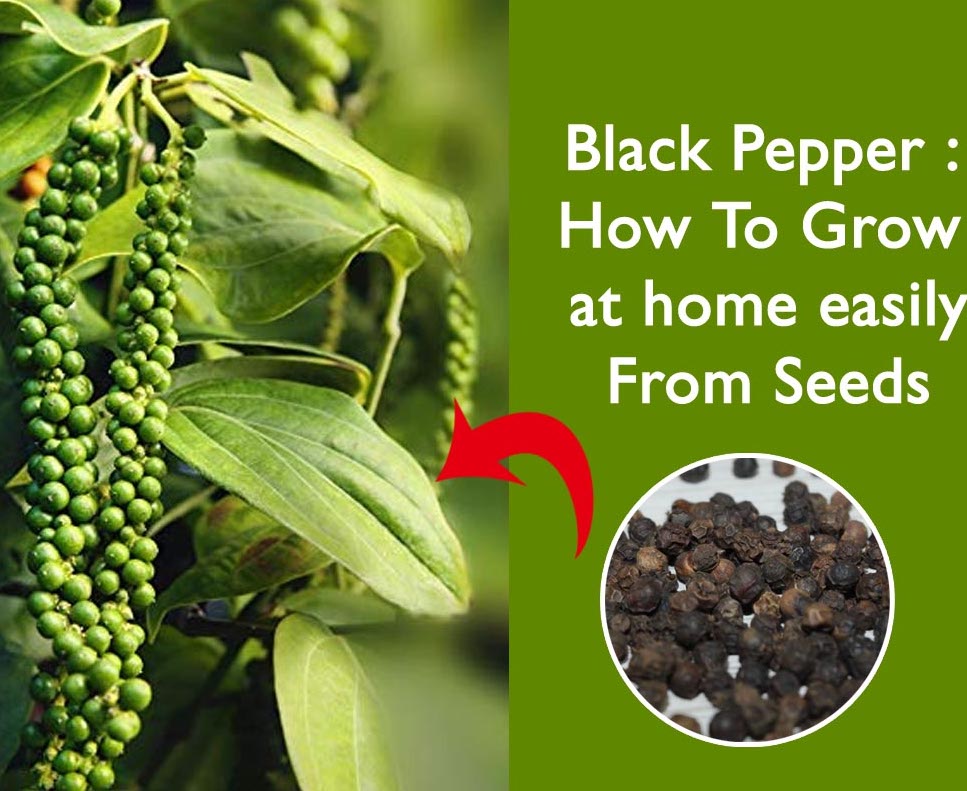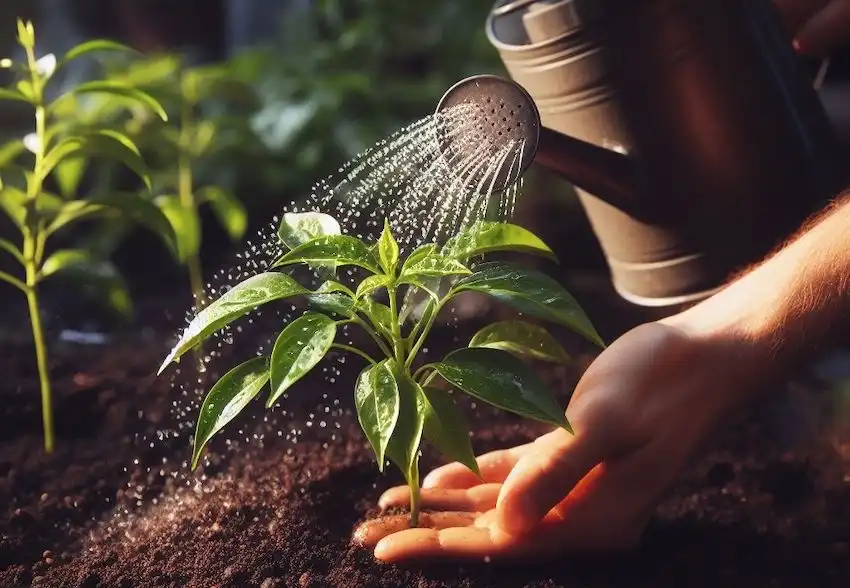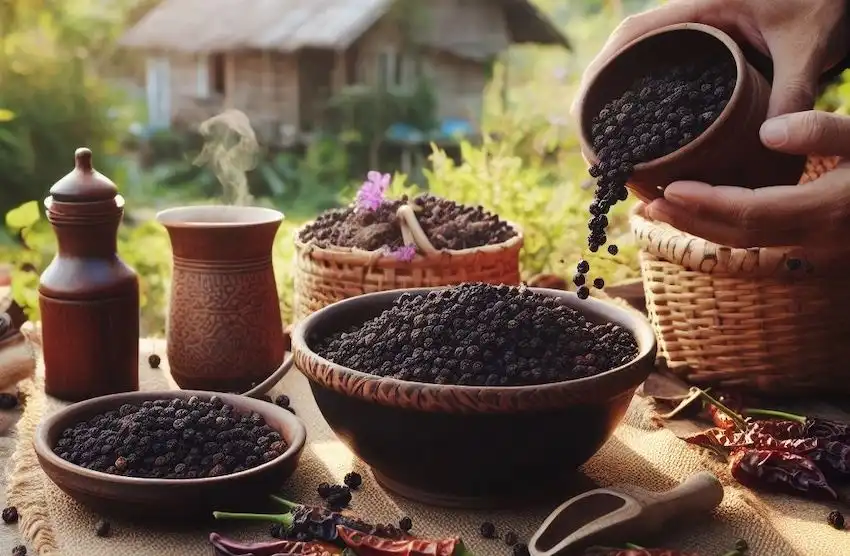Growing black pepper (Piper nigrum) at home can be a rewarding venture, even if you’re not in a hot climate. With the right conditions and a little patience, you can cultivate this spice in your own space. Here’s an extensive guide on how to grow black pepper from seeds at home, incorporating insights from various sources.
Ideal Growing Conditions

Climate Adaptability: While black pepper plants typically thrive in tropical climates with high temperatures and humidity, they can adapt to cooler and drier climates as well.
Sunlight Needs: These plants require at least 6 hours of indirect sunlight per day. If you’re growing them indoors, place the plant near a window for partial sunlight.
Soil Requirements: Use well-draining soil with a pH between 6.2 and 7.0. Medium-clay, humus-rich soil works best, as it retains some moisture while providing good drainage. Adjust the soil pH with lime or sulfur if needed.
Watering and Humidity
Watering Schedule: Water your black pepper plants 2 to 3 times a week or whenever the soil surface is dry. Make sure the soil remains consistently moist, but avoid overwatering to prevent rot and pests.
Humidity Levels: To increase humidity, mist the plants frequently with soft water. For potted plants, you can place a saucer of water underneath them.
Soil Preparation and Fertilization
Soil Enrichment: Prepare the ground by adding well-aged manure or nutrient-rich compost. To encourage stronger growth, use liquid fertilizer every two weeks and Epsom Salt.
Mulching: Use organic mulch like leaves, straw, or grass clippings to prevent evaporation and suppress weeds. Mulching should be done twice per year.
Planting Process
Seed Preparation: Soak the black pepper seeds in lukewarm water overnight. Then, plant them in pots with quality potting mix and aged manure or compost, at a depth of about a quarter to a half-inch. Space the seeds no more than three inches apart.
Germination and Growth: Plant the seeds indoors and keep the soil moist and warm. Germination should occur in 30 to 40 days. Once the seedlings are 5 to 6 inches tall, plant them outside, providing overhead shade at first.
Propagation from Cuttings: You can also propagate black pepper plants from runner shoots. Cut the shoots into two- or three-node cuttings and plant them in well-draining soil, keeping it moist.
Patience and Care
Growth Time: It may take several years for the black pepper plants to bloom and produce peppercorns, usually up to 5 years. Patience is key.
Pest and Disease Management: Keep an eye out for root rot, aphids, slugs, scale insects, and spider mites. Use organic pest control methods as needed.
Harvesting and Storage
Harvesting Mature Plants: It takes 2 to 5 years for the plants to mature enough for harvesting. When ready, the peppercorn fruits will turn light red. Dry them in direct sunlight until they shrink and turn black.
Storage: Store peppercorns for up to 4 years in an airtight container in a cool, dry place. For freshly ground pepper, store it in resealable bags in a similar manner.
Additional Tips
Choice of Location: Select a location in your garden or home that can provide the necessary sunlight and humidity conditions.
Regular Maintenance: Regularly check the plants for signs of pests or diseases and take immediate action to mitigate any issues.
Support Structures: As black pepper plants are vines, providing support structures like trellises can help manage their growth effectively.
Growing black pepper from seeds at home requires attention to detail, from soil preparation to ensuring the right environmental conditions. With patience and proper care, you can successfully cultivate this spice and enjoy its fresh, pungent flavor right from your garden. Remember, the key to a thriving black pepper plant lies in the balance of humidity, sunlight, and soil conditions.








